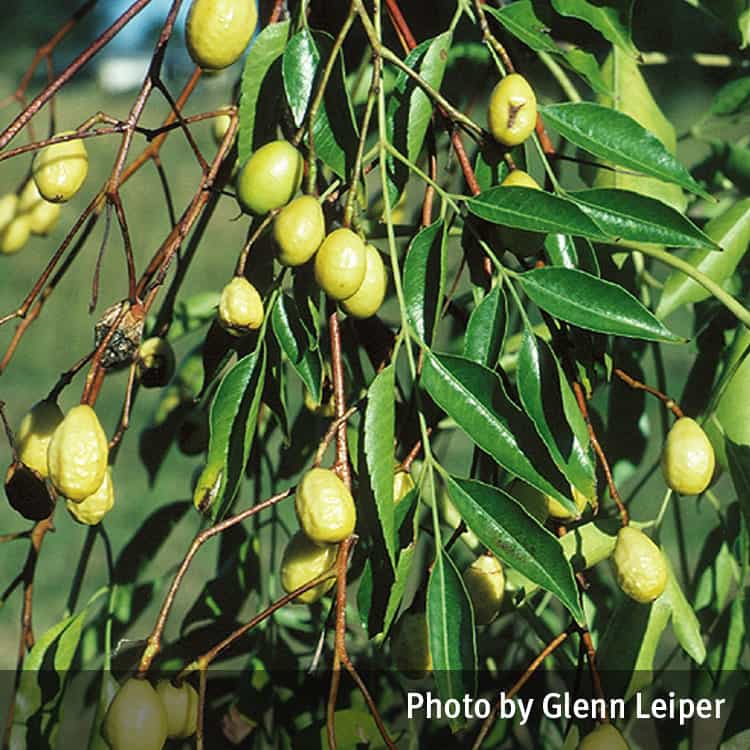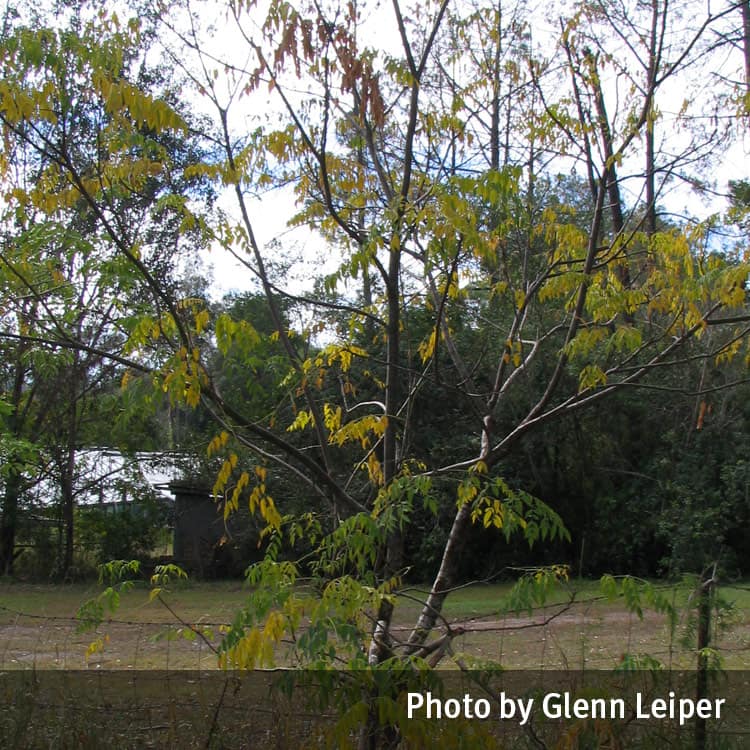Warning
Seek urgent medical assistance for all ingestions.
Description
A large deciduous tree, often grown as a shade or street tree.
The flowers are lilac, about 2cm wide, and are held in large clusters in the forks of the leaves.
The leaves consist of numerous bright green leaflets 2.5–7.5cm long and 1–4cm wide, with coarsely toothed margins.
Toxicity
Symptoms
All parts of the plant are poisonous, although it is the fruits that are usually eaten. Symptoms may include nausea, vomiting, diarrhoea, lethargy, confusion, coma, seizures, and death. Symptoms may begin within one hour or be delayed several hours.
Images


Details
Common name: White cedar
Botanical name: Melia azedarach
Other common names: Chinaberry, Cape lilac, Tulip cedar, Karabil, Bead tree, Persian lilac, Rosary tree
Family: Meliaceae
General description: A large deciduous tree, often grown as a shade or street tree.
Flowers: The flowers are lilac, about 2cm wide, and are held in large clusters in the forks of the leaves.
Leaves: The leaves consist of numerous bright green leaflets 2.5–7.5cm long and 1–4cm wide, with coarsely toothed margins.
Fruit/Berries: The fruit are in open bunches that hang down from the branches. The fruit are dull yellow, oval, 12–17mm long, with a fleshy pulp surrounding a hard, grooved stone. When ripe, the fruit become brown and dimpled and readily fall from the tree. The tree may be leafless when the fruit are ripe.
Other: The sap is clear.